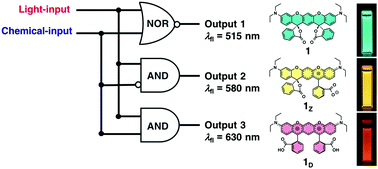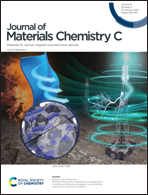Stepwise structural and fluorescent colour conversion in rhodamine analogues based on light and acid stimulations†
Abstract
The research and development of multi-stimuli, multi-responsive molecules have attracted considerable attention in chemistry, biology, and material science. Herein, we propose a multi-stimuli-responsive multi-fluorescence system in a single molecule. This system is based on the isomerization that involves ring-opening/closing reactions of spirolactones of rhodamine analogues (ABPXs), developed by our group, which can be independently controlled by light and chemical stimuli. UV light irradiation opens one of the spirolactones to give thermally stable coloured isomer (Z) in solution. Detailed synthetic and theoretical investigations reveal that the ring-opening reaction of ABPXs proceeds via the formation of a photo-induced charge separated state, followed by the recombination of the biradicals. Furthermore, we explore the structure–kinetic relationships and demonstrate that the introduction of electron-donating substituents into the xanthene ring can tune the lifetime of the photo-generated isomer. Chemical stimulation by an acid further promotes the ring-opening reaction to give a red-shifted isomer (D). These light and chemical input signals can be converted into output signals of distinct colour and fluorescence. The multi-stimuli-responsive multi-colour fluorescence could be distinctively expressed through the combinatorial logic gate.



 Please wait while we load your content...
Please wait while we load your content...